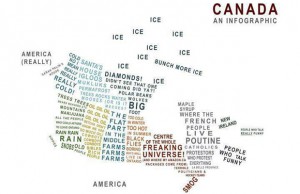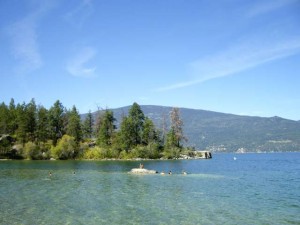Hello!
The question prompt for this blog is question 3: What are the major differences or similarities between the ethos of the creation story and the story that King tells us in the Truth About Stories?
I was not raised with any one form of religion. My parents were both born in Christian households that were active church goers when my parents were young but were the type of families that started to just go every Easter and Christmas. At my Grandparents house we still say a grace before family meals, but nowhere else is a sort of organized religion found. Growing up we had an Osborne book of World Religions which introduced me at a very age to other forms of religions. My Mom is interested in Buddhism and has some Buddhist quotes around the house. We did however learn, although I do not remember when, the Christian creation story which has guided me throughout my life thus far. I do not remember who taught this to me or when, but as far as I can remember, I was aware of the Christian creation story and other religious as well. So that is my background into religion.
One of the major differences that I immediately noticed upon viewing was the introduction of a woman. There is no male mentioned in conjunction with the woman, she is independent of anyone else. The woman is an explorer who enjoys discovering the world around her. The woman’s role in the creation story is that she explored the world around her and then created life (the Twins) who could expand it. The woman is the sole creator of life and she is central to the story.
The creation story in the Bible has both a man (Adam) and a woman (Eve). Eve is the one who breaks God’s only rule: do not eat from the tree of good and evil. Eve eats the apple (this is contested) and therefore gets humankind shunned from the oasis that God created and “sin” is now a thing. The woman is solely to blame. The woman is not in charge of creating life, the Spirit of God does. Her role is mostly negative. This still is a reason that Christian followers put woman in different roles (usually within the household) because they are supposedly worse than men and caused the creation of sin.
My creation story devalues the role of women because it says Eve is responsible for humans having Earthly desires whereas King’s story displays how women are needed to create life. This contrast in the role of women was one of the first things I picked up on. Women are treated very poorly in parts of the Bible, starting with the creation story. This is drastically different from my own personal views, yet I still am a believer of the creation story of the Bible. Is it possible to be a Christian feminist if the Bible puts women down from the get-go?
The other main difference that stood out to me is the role of evil or conflict in both of the stories. In King’s story, it concludes with everyone saying that they are going to get along and what a beautiful world they live in. Whereas, the creation story of the Bible ends with Eve and Adam getting cast out in the vast wilderness without their God. King’s story paints a much brighter picture of the world and the inhabitants of it. I find the Bible to sort of cast humans as faulty from the start and did not allow Eve and Adam to see the beauty of the world. King’s is inherently more positive.
Although my creation story that is the story of the Bible is different from the story that King presents, both of them are beautiful stories with beautiful words. Both should be equally told and explored so individually we can decide for ourselves what creation story resonates with us.




